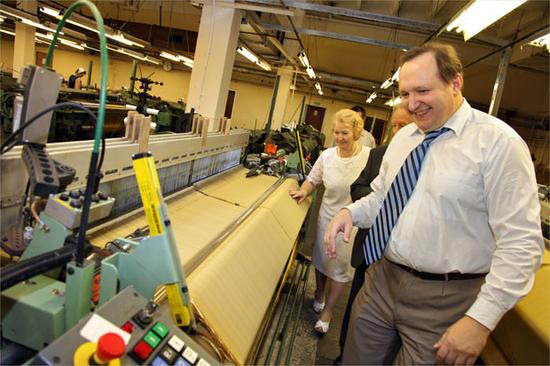Russia invites international clothing brands to set up factories
In March this year, Amancio Ortega, the world’s second richest man and owner of the Inditex clothing empire, received an unexpected invitation. The Russian government wanted him to move his factory to Russia because of the weakness of the ruble. Production costs there are already lower than in China.
United Press International reported that the Russian Ministry of Industry and Trade announced that they were communicating with Inditex. Other manufacturers such as H&M, IKEA and Decathlon will also follow this trend.
Currently, Inditex’s garment factories are mainly located in Vietnam, Indonesia, China, Turkey and Eastern Europe. In terms of retail stores, this is already their third largest market after Spain and China.
In November 2015, after a Russian military plane was shot down by Turkey near the Syrian border and relations between the two countries became tense, foreign players’ interest in the Russian textile industry further increased.
Since then, Russia has significantly reduced the import of Turkish goods. Although textiles have not been covered by the ban so far, “Kommersant” reported in December last year that the Russian government may also include Turkish clothing in the ban. Checklist.
In addition, at the end of last year, Turkish T24 TV station also reported that brands such as Zara, Mango and H&M have asked Turkish manufacturers to remove the “Made in Turkey” label to prevent clothing from being boycotted by Russian consumers. However, to fundamentally solve the problem, of course moving the factory to Russia can solve it once and for all.

At present, Russia’s local garment factories mainly only face domestic retailers and consumers. Therefore, it remains to be further observed how competitive they are compared with their Chinese and Vietnamese counterparts. The output of the latter two is a hundred times that of theirs. .
Nowadays, all major international brands use a global outsourcing system, such as contracting with a clothing factory in a certain country to produce and sell the finished products all over the world. This system requires the strictest standardized production procedures and requires large investments in factories, which is a challenge that Russian manufacturers have never encountered before.
Lyudmila Ivanova, head of the Fashion Industry Committee under the Russian Textile Industry Association, firmly believes that if Zara or H&M choose to produce in Russia, the quality of their products will not be reduced.
“We have learned to produce high-quality clothing. Many Russian brands are very popular among our consumers. Some things, if you are not told that they are produced in Russia, you will think they are produced in Europe.”
Russia’s major clothing brands currently have their production factories mainly in Asian countries.
“Currently, our orders are mainly fulfilled by factories in China and Bangladesh, but we are very interested in Russian manufacturers.” Eduard Ostrobrod, vice president of Russian clothing chain Sela, said that they are currently Consider moving production back to Russia.
“At a textile industry forum held by the Ministry of Industry and Trade not long ago, we met some interesting Russian manufacturers and we would like to cooperate with them.”
Since the beginning of the economic crisis, many Russian clothing brands have moved production back from Asia and invested in building factories. At the same time, more and more foreign clothing brands have begun to enter. In February 2015, “Russian Business Daily” reported that French sportswear brand Decathlon had signed a memorandum of understanding with Novosibirsk S-Tep to produce sports shoes at this factory. In the short term, these products will only be supplied to Decathlon’s Russian stores, but in the future, they will also enter the global sales network.
The Russian textile industry calls for greater government support to ensure they can better integrate with brands and consumers. They also hope that the government will improve the investment environment so that foreign brands can enter with greater peace of mind. They emphasized that the depreciation of the ruble cannot continue forever and Russia must come up with other competitive advantages.
Now, there are some successful examples of the integration of international brands and local Russian factories. The Swedish company IKEA was invited to enter by the Russian government and has been happily cooperating with Russian manufacturers for a long time. IKEA has been stocking products in Russia since 1991. At that time, there were no IKEA stores in Russia.
AAA
Disclaimer:
Disclaimer: Some of the texts, pictures, audios, and videos of some articles published on this site are from the Internet and do not represent the views of this site. The copyrights belong to the original authors. If you find that the information reproduced on this website infringes upon your rights and interests, please contact us and we will change or delete it as soon as possible.
AA




